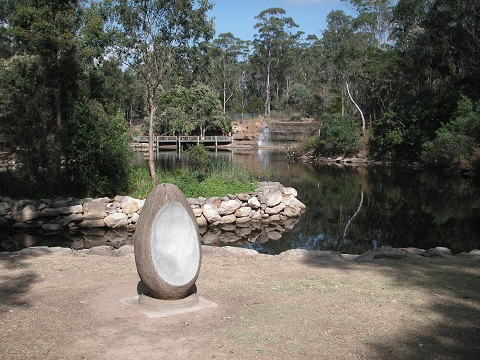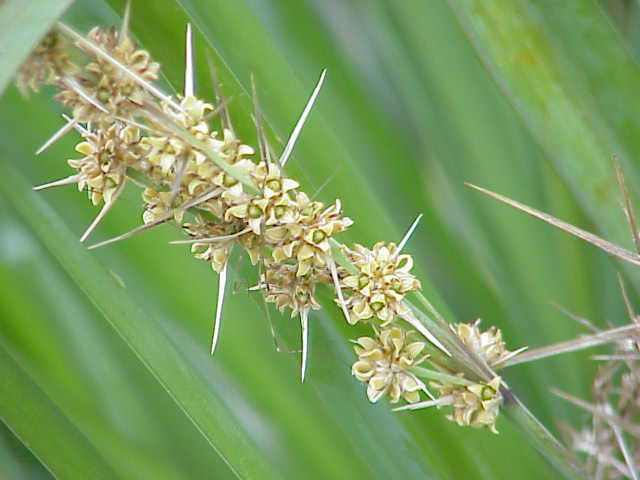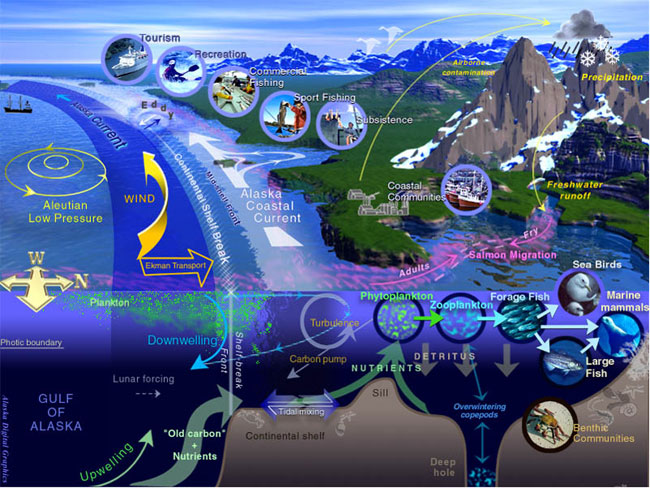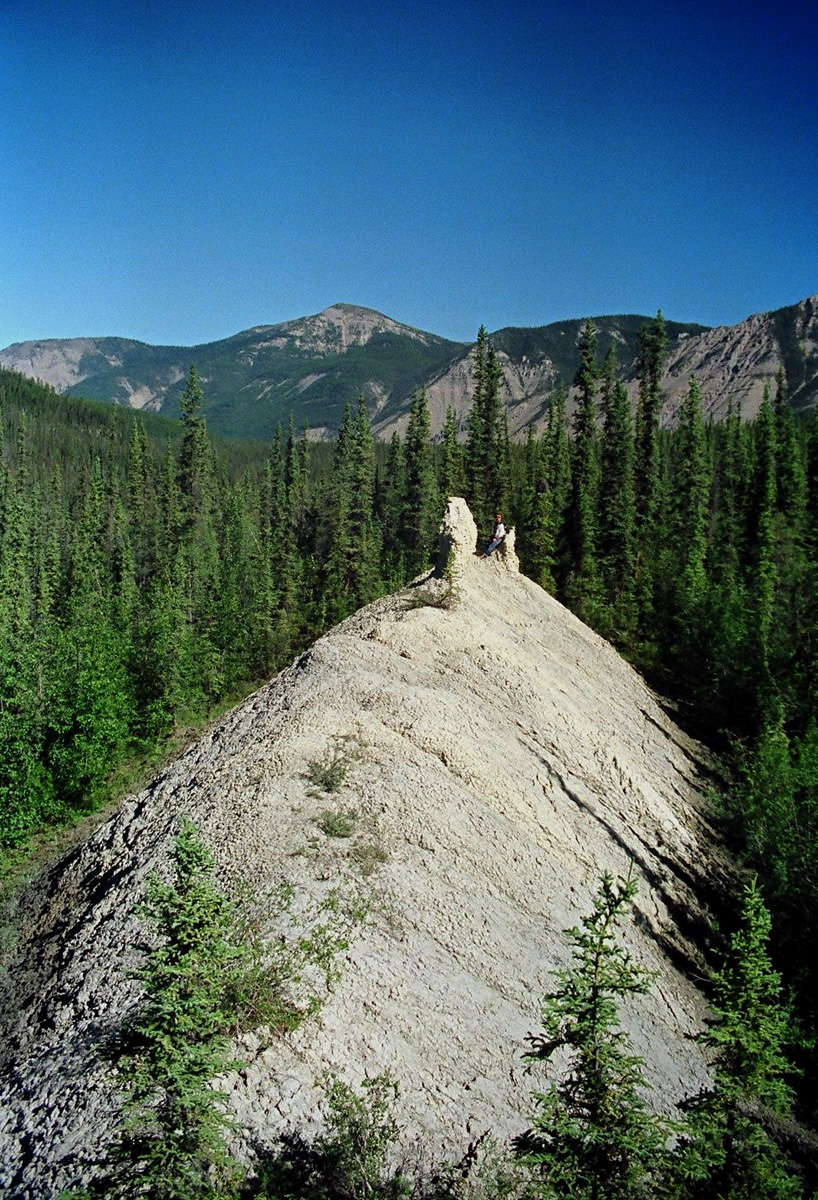|
Central Gardens Nature Reserve
The Central Gardens Nature Reserve, also called Central Gardens, is a protected nature reserve located in the western suburbs of Sydney, New South Wales, Australia. Established in 1976, the reserve, garden and fauna and wildlife park is situated in the suburb of Merrylands and is managed by Cumberland Council. The park is regionally important and it attracts visitors outside the Cumberland local government area. The bushland contains remnants of Cumberland Plain Woodland and is approximately . History Before opening, the area was first used for clay extraction pits and kilns for brick making in the 1970s. The design of the park began at that time, with the tennis courts and grass area developed. The reserve was officially opened on 12 April 1976 by The Hon Tom Uren, the Deputy Leader of the Opposition at that time. Many trees were lost in the park as a result of a severe storm in February 2002. The boardwalk and deck structure was built in 1993, which was designed to allow ... [...More Info...] [...Related Items...] OR: [Wikipedia] [Google] [Baidu] |
Boardwalk
A boardwalk (alternatively board walk, boarded path, or promenade) is an elevated footpath, walkway, or causeway built with wooden planks that enables pedestrians to cross wet, fragile, or marshy land. They are also in effect a low type of bridge. Such timber trackways have existed since at least Neolithic times. Some wooden boardwalks have had sections replaced by concrete and even "a type of recycled plastic that looks like wood." History An early example is the Sweet Track that Neolithic people built in the Somerset levels, England, around 6000 years ago. This track consisted mainly of planks of oak laid end-to-end, supported by crossed pegs of ash, oak, and lime, driven into the underlying peat. The Wittmoor bog trackway is the name given to each of two prehistoric plank roads, or boardwalks, trackway No. I being discovered in 1898 and trackway No. II in 1904 in the ''Wittmoor'' bog in northern Hamburg, Germany. The trackways date to the 4th and 7th century AD, bot ... [...More Info...] [...Related Items...] OR: [Wikipedia] [Google] [Baidu] |
Tom Uren
Thomas Uren (28 May 1921 – 26 January 2015) was an Australian politician and Deputy Leader of the Australian Labor Party from 1975 to 1977. Uren served as the Division of Reid, Member for Reid in the Australian House of Representatives from 1958 to 1990, being appointed Minister for Housing (Australia), Minister for Urban and Regional Development (1972–75), Minister for Minister for Home Affairs (Australia), Territories and Minister for Local Government, Territories and Roads (Australia), Local Government (1983–84) and Minister for Minister for Local Government, Territories and Roads (Australia), Local Government and Minister for Finance and Deregulation (Australia), Administrative Services (1984–87). He helped establish the heritage and conservation movement in Australia and, in particular, worked to preserve the heritage of inner Sydney. Early life Uren was born in Balmain, New South Wales, Balmain, Sydney, then a working-class suburb, and was educated at Manly Select ... [...More Info...] [...Related Items...] OR: [Wikipedia] [Google] [Baidu] |
Eucalyptus Brownii
''Eucalyptus'' () is a genus of over seven hundred species of flowering trees, shrubs or mallees in the myrtle family, Myrtaceae. Along with several other genera in the tribe Eucalypteae, including ''Corymbia'', they are commonly known as eucalypts. Plants in the genus ''Eucalyptus'' have bark that is either smooth, fibrous, hard or stringy, leaves with oil glands, and sepals and petals that are fused to form a "cap" or operculum over the stamens. The fruit is a woody capsule commonly referred to as a "gumnut". Most species of ''Eucalyptus'' are native to Australia, and every state and territory has representative species. About three-quarters of Australian forests are eucalypt forests. Wildfire is a feature of the Australian landscape and many eucalypt species are adapted to fire, and resprout after fire or have seeds which survive fire. A few species are native to islands north of Australia and a smaller number are only found outside the continent. Eucalypts have been grown ... [...More Info...] [...Related Items...] OR: [Wikipedia] [Google] [Baidu] |
Lomandra Filiformis
''Lomandra filiformis'', commonly known as wattle mat-rush, is a tussock forming perennial herb that is native to Australia Australia, officially the Commonwealth of Australia, is a Sovereign state, sovereign country comprising the mainland of the Australia (continent), Australian continent, the island of Tasmania, and numerous List of islands of Australia, sma .... It is sparsely tufted, with strap-like leaves and yellow flowers. It grows in dry sclerophyll forest and grassy woodland, usually on well-drained rocky or sandy soils. References filiformis Asparagales of Australia Flora of Queensland Flora of New South Wales Flora of Victoria (Australia) Plants described in 1808 {{Australia-plant-stub ... [...More Info...] [...Related Items...] OR: [Wikipedia] [Google] [Baidu] |
Exocarpos Cupressiformis
''Exocarpos cupressiformis'', with common names that include native cherry, cherry ballart, and cypress cherry, belongs to the sandalwood family of plants. It is a species endemic to Australia. Occasionally the genus name is spelt "Exocarpus" but it appears to be mostly no longer in use. Description The cherry ballart superficially resembles the cypress. It is a large shrub or small tree, tall, often pyramidal in shape. There are no authoritative published accounts of its host plants or parasitism, the following notes are based on anecdotal accounts. In the early stages of development especially, and like many other members of the Santalaceae, the plants are hemiparasitic on the roots of other trees, particularly Eucalyptus – hence the usefulness of shallow soils to establish this parasitism. More mature plants are less reliant on this parasitism once photosynthesis in their stems is well established. The leaves are reduced to small scales; the green, drooping stems are the sit ... [...More Info...] [...Related Items...] OR: [Wikipedia] [Google] [Baidu] |
Melaleuca Decora
''Melaleuca decora'', commonly known as the white feather honeymyrtle, is a plant in the myrtle family, Myrtaceae and is native to eastern Australia. It is a large shrub to small tree with papery bark, lance-shaped leaves and sweet-smelling, creamy-coloured flowers in summer. It grows in near-coastal forest and swamps in New South Wales and Queensland. Description ''Melaleuca decora'' has brown or whitish papery bark and grows to the height of a small tree, usually to but exceptional specimens may exceed in height. The leaves are arranged alternately, long, wide, flat, narrow elliptic in shape and tapering to a point. The flowers are cream-coloured or white, arranged in spikes on the ends of branches that continue to grow after flowering, sometimes on the sides of the branches. The spikes are up to in diameter, long and have between 3 and 30 groups of flowers, usually in threes. The petals are roughly egg-shaped long and fall off as the flower ages. The stamens are arra ... [...More Info...] [...Related Items...] OR: [Wikipedia] [Google] [Baidu] |
Eucalyptus Moluccana
''Eucalyptus moluccana'', commonly known as the grey box, gum-topped box or terriyergro, is a medium-sized to tall tree with rough bark on part or all of the trunk, smooth bark above, lance-shaped adult leaves, flower buds usually in groups of seven, white flowers and cup-shaped to barrel-shaped fruit. It is found in near-coastal areas of Queensland and New South Wales. Description ''Eucalyptus moluccana'' is a tree that typically grows to a height of and forms a lignotuber. It has persistent rough, fibrous or flaky bark on part or all of the trunk, smooth whitish or light grey bark above, sometimes with a shiny surface. Young plants and coppice regrowth have egg-shaped leaves that are paler on the lower surface, long, wide and petiolate. Adult leaves are lance-shaped to broadly lance-shaped, the same glossy green on both sides, long and wide on a petiole long and with many oil glands. The flower buds are arranged on the ends of branchlets in groups of usually seven, on a b ... [...More Info...] [...Related Items...] OR: [Wikipedia] [Google] [Baidu] |
Bursaria Spinosa
''Bursaria spinosa'' is a small tree or shrub in the family Pittosporaceae. The species occurs mainly in the eastern and southern half of Australia and not in Western Australia and the Northern Territory. Reaching 10 m (35 ft) high, it bears fragrant white flowers at any time of year but particularly in summer. A common understorey shrub of eucalyptus woodland, it colonises disturbed areas and fallow farmland. It is an important food plant for several species of butterflies and moths, particularly those of the genus '' Paralucia'', and native bees. Description ''Bursaria spinosa'' has a variable habit, and can grow anywhere from 1 to 12 m high. The dark grey bark is furrowed. The smooth branches are sometimes armed with thorns, and the leaves are arranged alternately along the stems or clustered around the nodes and have a pine-like fragrance when bruised. Linear to oval or wedge-shaped (ovate, obovate or cuneate), they are 2–4.3 cm long and 0.3–1.2 ... [...More Info...] [...Related Items...] OR: [Wikipedia] [Google] [Baidu] |
Flora Of Australia
The flora of Australia comprises a vast assemblage of plant species estimated to over 30,000 vascular and 14,000 non-vascular plants, 250,000 species of fungi and over 3,000 lichens. The flora has strong affinities with the flora of Gondwana, and below the family level has a highly endemic angiosperm flora whose diversity was shaped by the effects of continental drift and climate change since the Cretaceous. Prominent features of the Australian flora are adaptations to aridity and fire which include scleromorphy and serotiny. These adaptations are common in species from the large and well-known families Proteaceae ('' Banksia''), Myrtaceae (''Eucalyptus'' - gum trees), and Fabaceae (''Acacia'' - wattle). The arrival of humans around 50,000 years ago and the settlement by Europeans from 1788, has had a significant impact on the flora. The use of fire-stick farming by Aboriginal people led to significant changes in the distribution of plant species over time, and the lar ... [...More Info...] [...Related Items...] OR: [Wikipedia] [Google] [Baidu] |
Royal Botanic Gardens, Sydney
The Royal Botanic Garden, Sydney is a heritage-listed major botanical garden, event venue and public recreation area located at Farm Cove on the eastern fringe of the Sydney central business district, in the City of Sydney local government area of New South Wales, Australia. Opened in 1816, the garden is the oldest scientific institution in Australia and one of the most important historic botanical institutions in the world. The overall structure and key elements were designed by Charles Moore and Joseph Maiden, and various other elements designed and built under the supervision of Allan Cunningham, Richard Cunningham, and Carrick Chambers. The garden is owned by the Government of New South Wales and administered by the Royal Botanic Gardens and Domain Trust. The Botanic Garden, together with the adjacent Domain were added to the New South Wales State Heritage Register on 2 April 1999. The Garden and The Domain are open every day of the year and access is free. Its st ... [...More Info...] [...Related Items...] OR: [Wikipedia] [Google] [Baidu] |
Marine Animal
Marine life, sea life, or ocean life is the plants, animals and other organisms that live in the salt water of seas or oceans, or the brackish water of coastal estuaries. At a fundamental level, marine life affects the nature of the planet. Marine organisms, mostly microorganisms, produce oxygen and sequester carbon. Marine life in part shape and protect shorelines, and some marine organisms even help create new land (e.g. coral building reefs). Most life forms evolved initially in marine habitats. By volume, oceans provide about 90% of the living space on the planet. The earliest vertebrates appeared in the form of fish, which live exclusively in water. Some of these evolved into amphibians, which spend portions of their lives in water and portions on land. One group of amphibians evolved into reptiles and mammals and a few subsets of each returned to the ocean as sea snakes, sea turtles, seals, manatees, and whales. Plant forms such as kelp and other algae grow in the wate ... [...More Info...] [...Related Items...] OR: [Wikipedia] [Google] [Baidu] |
Silt
Silt is granular material of a size between sand and clay and composed mostly of broken grains of quartz. Silt may occur as a soil (often mixed with sand or clay) or as sediment mixed in suspension with water. Silt usually has a floury feel when dry, and lacks plasticity when wet. Silt also can be felt by the tongue as granular when placed on the front teeth (even when mixed with clay particles). Silt is a common material, making up 45% of average modern mud. It is found in many river deltas and as wind-deposited accumulations, particularly in central Asia, north China, and North America. It is produced in both very hot climates (through such processes as collisions of quartz grains in dust storms) and very cold climates (through such processes as glacial grinding of quartz grains.) Loess is soil rich in silt which makes up some of the most fertile agricultural land on Earth. However, silt is very vulnerable to erosion, and it has poor mechanical properties, making construc ... [...More Info...] [...Related Items...] OR: [Wikipedia] [Google] [Baidu] |








